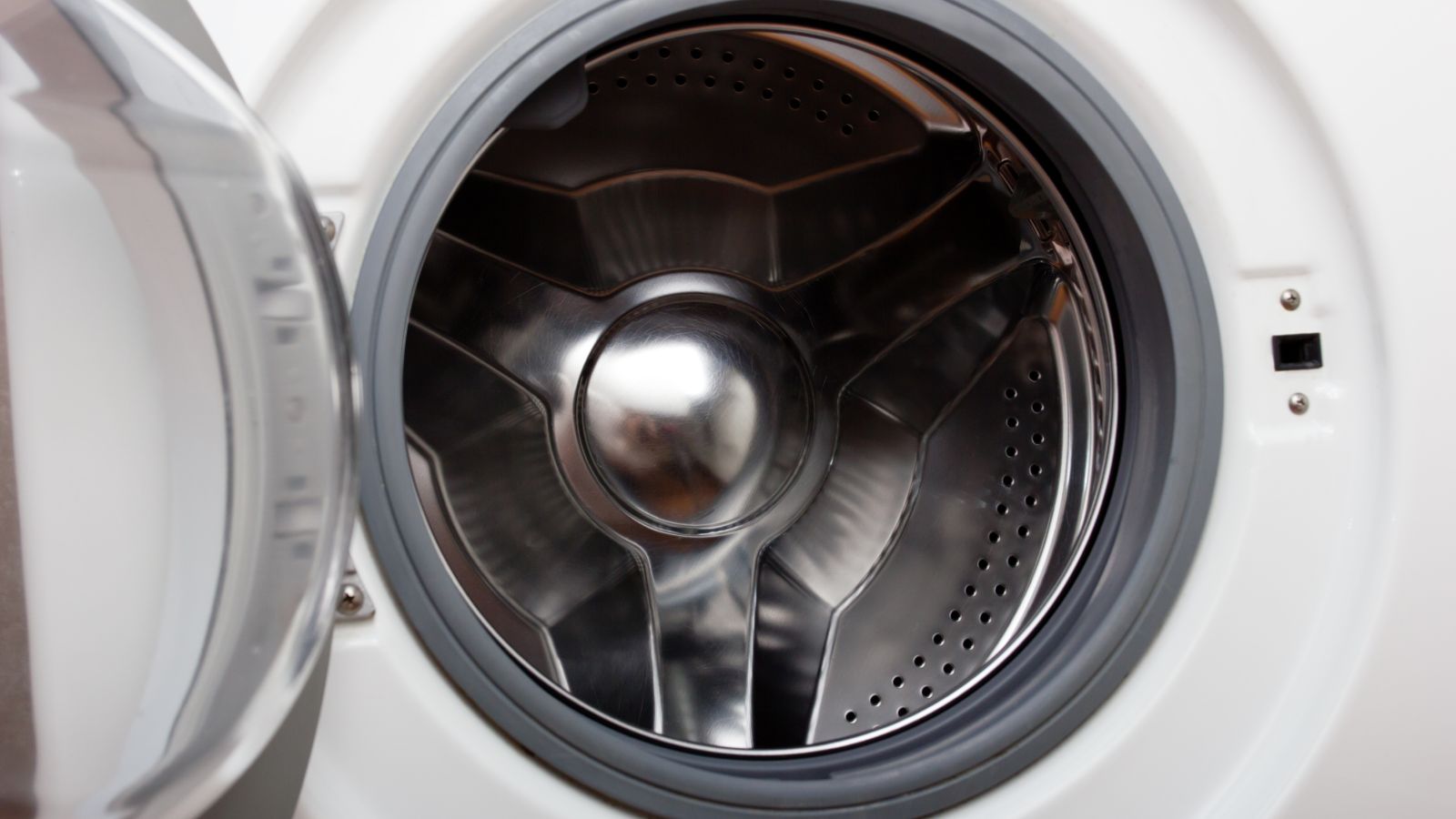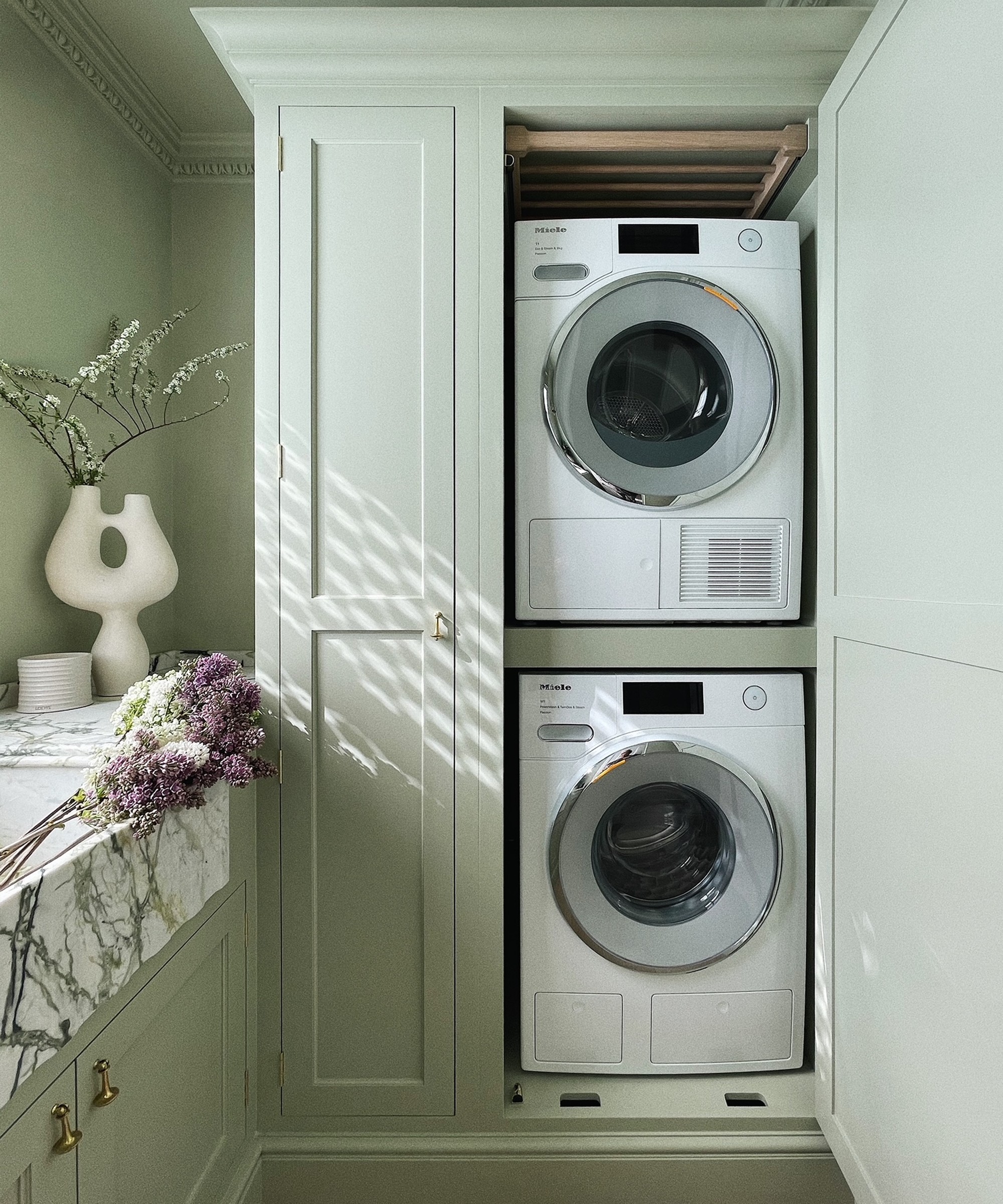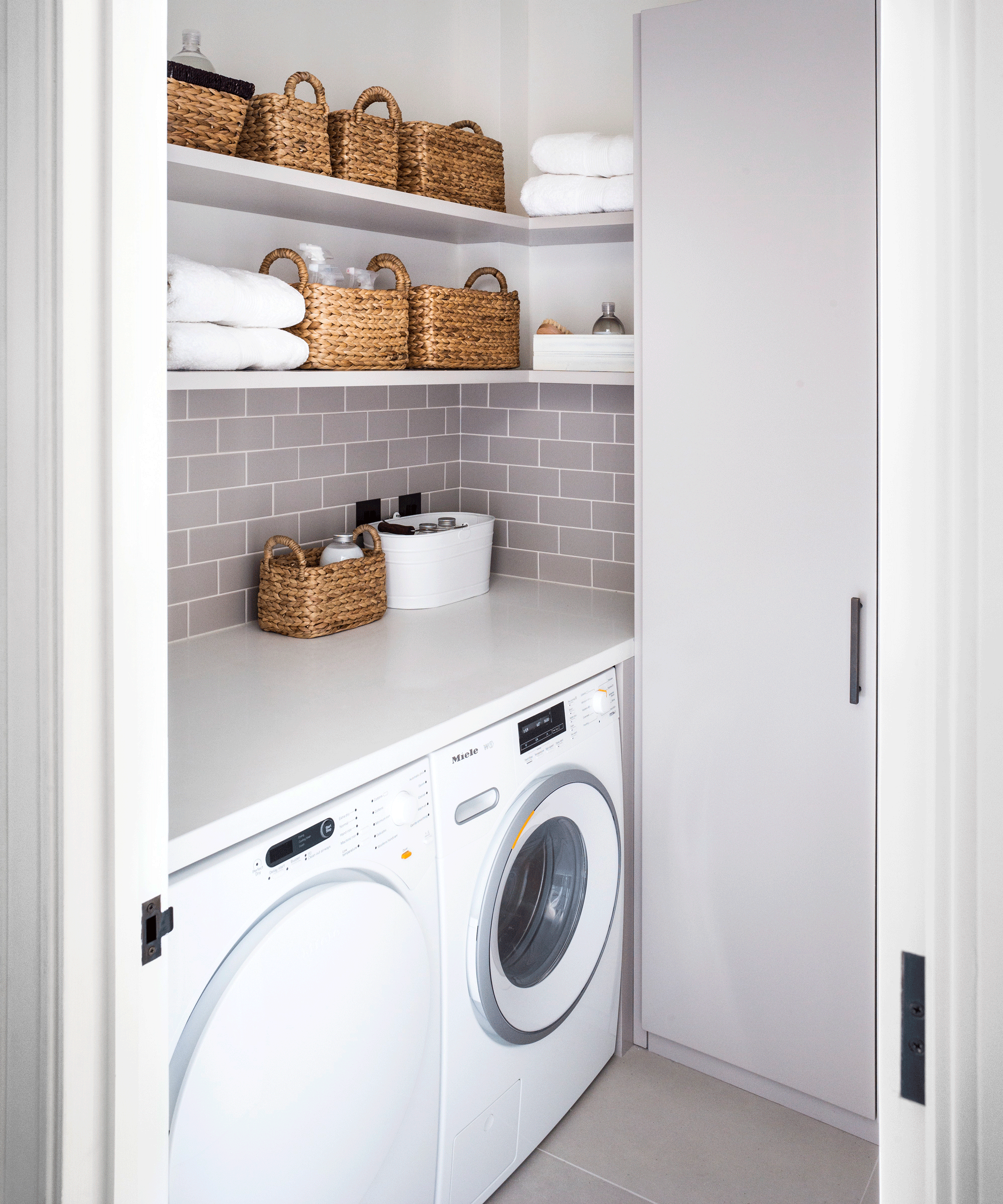
When it comes to household cleaning, there are a few spots that tend to slip most people’s minds – specifically, anything with 'wash' in the name. Washing machines and dishwashers are frequently left off of our must-wash lists, but they actually need to be cleaned as well. And you can use vinegar – in the right quantities.
Cleaning a washing machine is particularly important as they can develop an odor, and bacteria, mold, and mildew can begin to grow the longer you leave the appliance unwashed. Luckily, there’s an easy, natural way to clean your washing machine that only requires one main ingredient: vinegar.
According to cleaning expert Becky Rapinchuk, Founder of Clean Mama, white vinegar is the secret to keeping both top and front load washing machines clean so you’re left with 'fresh smelling laundry and an odorless washing machine'.
How much vinegar to clean a washing machine
The methods do vary slightly depending on your style of washing machine, so read on to find out how much vinegar your specific model requires.

How much vinegar is needed for a top loading machine?
The answer is: four cups. Cleaning a top load washing machine with vinegar is a relatively simple process with just a few key steps.
1. Set the cycle
Set your washing machine to its hottest and longest setting, and make sure you select the highest capacity as well.
2. Add the vinegar
Once the cycle starts and the machine is filled with water it’s time to add the vinegar. Open the lid and add in four cups (945 mL) of white vinegar.
3. Run the cycle
Allow the cycle to run for about five to 10 minutes so the vinegar and water mixture has time to agitate and loosen any grime within the machine.
4. Pause the cycle
Open the lid and pause the cycle. Rapinchuk suggests letting the cycle sit for at least 'an hour so that the vinegar can do its job to get rid of the bacteria, mold and mildew'.
As the vinegar and water sit for an hour, you can take advrantage of the time to clean the rest of your machine as well. You can either dip a cleaning rag into the vinegar and water itself and use that to clean the exterior, or employ your favorite cleaning solution.
5. Restart the cycle
After an hour has passed, start the machine cycle again and let it run until it’s finished and fully drained. If any grime or smells linger, you can repeat the process until you’re satisfied.
This popular distilled white vinegar is excellent value and perfect for cleaning a variety of home surfaces. Mix it with a few drops of your favorite essential oils to create a natural all-purpose cleaner that smells great.
How much vinegar to clean a front load washing machine?

The answer is: 1.5 cups. Front load washers also benefit from vinegar, as they tend to trap unwanted smells even more than top load washing machines. '1 to 2 cups is the perfect amount for a standard-sized machine and ensures it gets a thorough cleaning and disinfectant,' explains Simon Allen Co-Founder of Fountain Filters. The process is a bit different though, so make sure to follow the directions specific to your appliance.
1. Select the cycle
Select the hot water setting on your machine. If your machine does not have a hot water option, choose either the 'whites' or 'stain' setting. If your washer has an 'extra rinse' setting, select that as well.
2. Add the vinegar
Add 1.5 cups of white vinegar to the drum or detergent dispenser.
3. Start the cycle
Start the cycle and allow it to run until completion. While the cycle runs clean the exterior of your machine using either vinegar and hot water or your favorite cleaning solution.
4. Rinse
Once the cycle is finished take a few moments to wipe down the rubber seal on the door and the machine’s dispensers using a cloth dipped in white vinegar. Follow up by rinsing with a damp cloth and dry them with a separate dry cloth to keep moisture from building up.
FAQs
Can using too much vinegar ruin your washer?
It’s important to make sure you only use white vinegar and do so in moderation. 'Unfortunately, over time, the acidity from the vinegar can wear down rubber seals and hoses inside the washing machine,' explains Simon Allen.
Stick to the recommended amounts of white vinegar above and your washing machine will remain in tip top shape.
How do I deep clean my washing machine with vinegar?
If using vinegar to clean your washing machine hasn't produced the thorough results you wanted, you can follow up with a second cycle, but use baking soda for cleaning rather than vinegar. That done, follow up with a hot cycle and rinse well before running a wash load, ensuring all traces of baking soda are removed.
Does vinegar remove mold and limescale in a washing machine?
'As well as regularly running a hot cycle with one to two cups of vinegar, you should follow this with another cycle using half a cup of baking soda,' says Simon Allen, Co-Founder of Fountain Filters. 'This helps to keep the machine mold-free and looking and smelling fresh. For limescale, use a hot cycle with lemon or a commercial descaling product.'
You can also use vinegar to remove mold from the rubber seals on your washing machine. However, you should always make sure you rinse the seal thoroughly after cleaning to avoid wearing it down over time.







